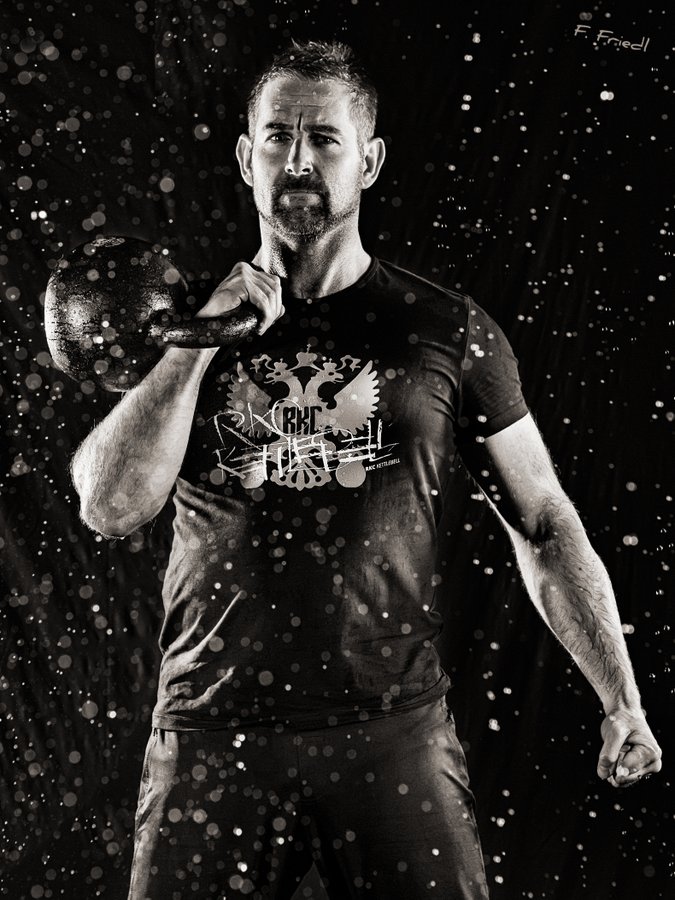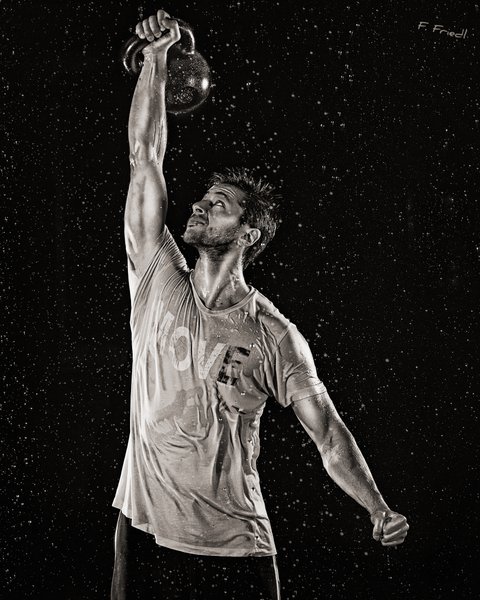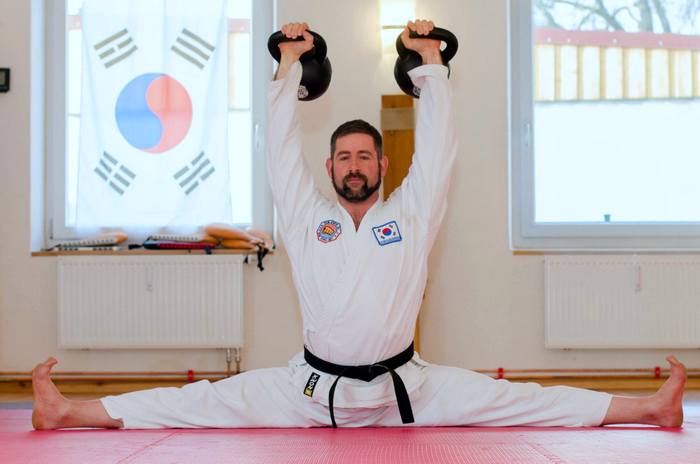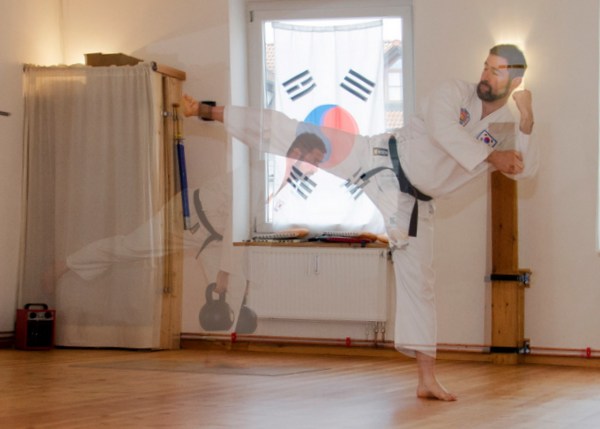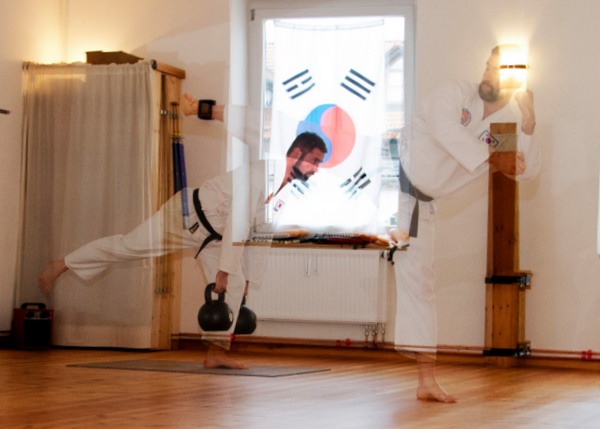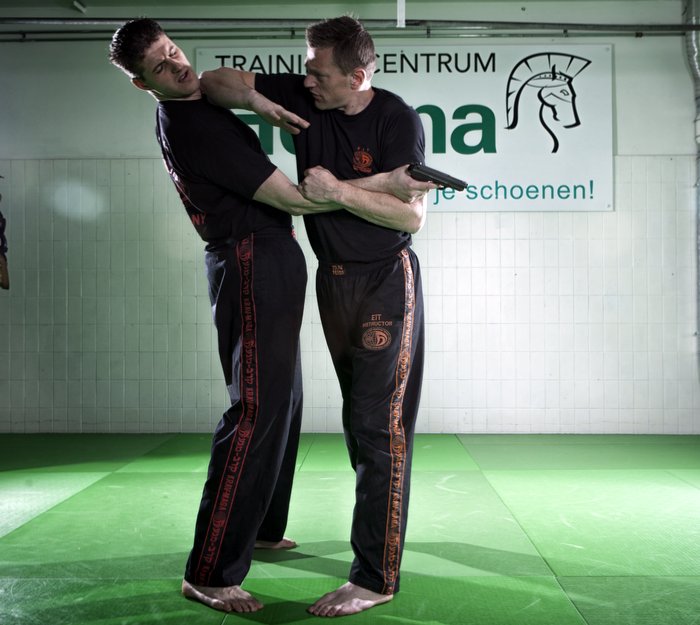
I have been a Krav Maga practitioner and instructor for over fifteen years—I also work as a mental coach, and teach physical training. To me, these are not separate disciplines. I am not a “jack-of-all-trades”. In fact, I feel very strongly about the logical, natural synergy between mental strength, physical strength and effective self-defense. In this blog post, I will describe this synergy and explain how kettlebell training will help your Krav Maga skills so you can defend yourself more effectively against punches, kicks, throws and even attacks with weapons.
First let me explain a little about Krav Maga. Krav Maga is a self-defense system developed in the Israeli army. A self-defense system. Krav Maga is neither a martial art nor a sport.
Martial arts were originally developed for self-defense but over time and due to various factors—spiritual/religious beliefs, politics, egos—most martial arts disciplines lost track of their primary goals. They stopped developing and gradually became outdated. As a result, they are hardly suitable for counteracting modern day threats. Most martial arts techniques are just too complex to use in stressful situations.
On the other hand, fighting as a sport is a great way to determine who is the better fighter. But as with any sport, rules and regulations apply. When entering a competition, there’s a set time frame, a single opponent, a referee to ensure fair play, etc. Running away is not a viable option. After all, the object is to fight, not to increase your well-being or safety.
In contrast, Krav Maga is about coping with real-life threats. Krav Maga is about defending yourself when confronted with an armed attack. The attack may come from the front, side, or the rear. It could happen when you are standing up or lying on the ground. You may be in your house or on the street. You might face one or many attackers. The bottom line is that an attack will almost always surprise you. In an extremely stressful situation, you must be able to apply the techniques you were taught.
In Krav Maga you train for these situations so you can remain unharmed or at least avoid getting seriously hurt. It could be the difference between life and death. The reward is not a trophy, it’s your life, your safety, and your health. The only rules you need to follow are the rules of the law (interestingly, these only seem to apply to you and not your attacker, but that’s another topic). Do you see the difference?
Safety is a double-edged sword. Let me explain. I am one of the highest ranking Krav Maga instructors in the world, and the first ever EIT (Expert Instructor Team) of the International Krav Maga Federation (IKMF). Over the last 12 years I have operated a successful business—Trainingscentrum Helena—with over 500 members at 4 different locations, where we teach Krav Maga, along with mental and physical training. Last year I taught in Holland, Belgium, Germany, Greece, Czech Republic, Israel and China.
Even though I instruct and train at the highest level—and do it a lot—I hardly ever have injuries during my classes or trainings. I have always felt very strongly that it is both very ironic and senseless to get injured during training that should prepare you to stay safe in your daily life. I carry this philosophy with me every time I teach or prepare for a class—whether it is Krav Maga or kettlebell training.
I want to share the lessons I’ve learned as a Krav Maga instructor and how they can benefit your kettlebell training. I also want to inspire people who train or teach Krav Maga to start using kettlebells. Kettlebells provide many benefits in Krav Maga training and in real life situations. Lastly, I wish to encourage everyone to take responsibility for their own safety.
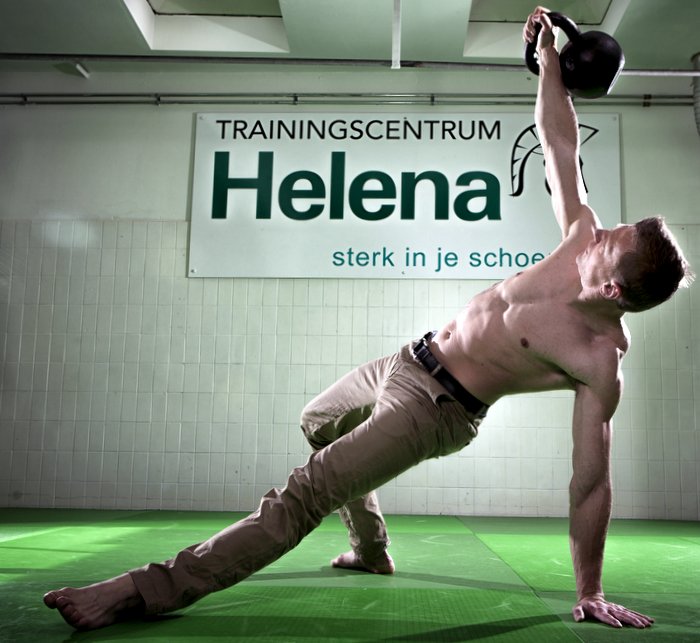
Safety First… Always
In Krav Maga we always put safety first. If you can avoid a fight, it is safer than trying to win a fight. So, run away whenever you can! If you don’t trust somebody, you don’t have to be nice or even polite. If you are going out on a date or having drinks with friends, plan ahead for how you will get home. Be sensible. Safety first!
The same goes for kettlebell training. The kettlebell can help you to become a better Kravist. The functional strength and cardio that you develop with kettlebell training will help you perform harder, better, faster, stronger. In kettlebell training, you have to do everything yourself, with no support from machines. You will improve your basic motor-skills for stability, develop solid movement patterns, and lose body fat. Kettlebell training will also help you with an explosive hip-drive for stronger kicks and punches, better grip strength for dealing with knife/gun threats, and the strength and stability in your midsection for efficient ground fighting. Last but not least, kettlebell training builds a durable body with strong ligaments. A body that can take a hit.
All these benefits can be yours, but only if you put safety first! Before you start training with kettlebells, you will need to learn how. In ancient times, knowledge was considered a secret, only to be shared among the elite. Luckily, times have changed. Today, everybody can learn how to defend him/herself and how to use a kettlebell. Be sensible and look for an RKC certified trainer (or IKMF in the case of Krav Maga), join a HKC workshop or become a professional at an RKC certification. Save yourself the trouble of trying to reinvent the wheel or copying YouTube amateurs. You can only learn safe and effective training with the right guidance, direct feedback and coaching.
Fighting Through Resistance
Every movement is preceded by a mental trigger. The brain moves the body and any physical movement is first a mental intention to act. Tough kettlebell workouts teach us how to “fight” ourselves through resistance. Your body feels tired and wants you to stop. Your mind gets distracted and starts thinking, “It’s enough”, “Why am I doing this?” or “I still have other things to do”. The mind is trying to convince you to quit. Your mindset—the conscious and trainable part of the brain—can convince you to finish your workout, manage your emotions, and keep you focused. These same exact qualities also make a difference when fighting for your life.
If you are unable to manage your emotions, you are more likely to quit working out when it gets hard. You might not even start the workout in the first place. You definitely won’t last in a fight; you will freeze or simply give up straight away when under attack. Fighting mental and physical resistance will make you strong! As your confidence grows, you will be less of an easy target, increasing your personal safety. Remember, you don’t have to outrun a lion, you just need to be faster than the other prey. If you don’t appear to be an easy target on the street, predators are more likely to look for someone else to harass. It’s a bitter fact, but it’s a jungle out there. Be clever, be strong.
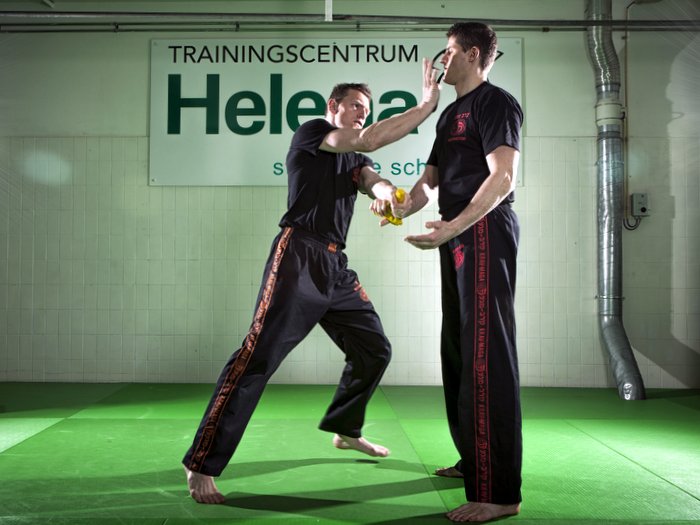
Technical, Not Emotional
Many people have difficulty adding regular workouts to their busy schedule. And even if they’ve found the time, they allow themselves to get distracted during the workout. They might not feel “in the mood” and start negotiating how to cut back this particular workout. Working out without letting your mind wander can be a challenge when emotions get involved. Emotions play a big role when you are trying to keep your focus. Similarly, when you are involved in a conflict—internal or with other people—always try to keep things technical, not emotional. Emotions will make you feel more stressed and will compromise your performance. You will also make bad decisions.
When defending yourself, the choice is simple—it’s him or you. No feelings are involved. If you let fear, frustration, or anger get the best of you when dealing with an attacker, saving yourself will get much harder. Consider your training an opportunity for learning how to make technical decisions and how to manage your emotions. Decide what you want to do—without letting emotions get involved—and then go for it. Do this with every workout from now on. You will be rewarded!
Working Under Stress
In Krav Maga, we understand how the right mindset can enhance your performance. However, when confronted with violence, one will always experience a certain amount of stress. The heart rate increase will affect your coordination, no matter how strong your mindset is. This is a main reason Krav Maga never incorporates fine motor skills in its techniques. With a heart rate of 140bpm and higher, your coordination skills will be seriously compromised. Try running up a few flights of stairs, then opening a locked door with a key. When your life is at risk, it’s not uncommon for your heart rate to be above 200 beats per minute. Plus, adrenaline rushes through your body, making you alert, but also giving you the shakes. You’ll start to sweat and feel like you’re losing control. Similar responses occur when you’re in a car accident or when you lose your balance at a great height. These are completely natural responses from the body that provide you with extra energy to save yourself. These responses elevate the heart rate, increase blood flow, and provide oxygen to the body. But this feeling can also overwhelm you and keep you from taking action. Unless you train yourself to deal with it, you may freeze and do nothing at all.
Many methods can teach you how to relax, but unless you also practice them under pressure, they won’t help you in stressful situations. For example, yoga will help you release stress and tension, but yoga is also usually performed in a relaxed and safe environment. It won’t teach you how to perform under extreme and violent circumstances. I believe it’s important to go beyond just trying to stay relaxed and avoid stress. Stressful situations will occur in life and it is healthy to accept and prepare to perform in these moments.
If you need to perform under stress, you will have to train your skills under a similar type of stress. So when you get nervous about making a big presentation at work, you shouldn’t just practice relaxation exercises. You must also practice the presentation for a group of critical strangers. If you feel intimidated by an audience, then you should prepare in front of an audience. When you are competing, stress can also help you, if you use it well. You should make friends with the stress first—before you marry it. Training under stress is an important principle in Krav Maga training.
Examples of how I increase stress for my students:
- Social stress: Perform in front of a group. Doing a test in public creates a lot of stress for people who don’t like to be judged or who always want to stay in control.
- Decision stress: Make multiple decisions in a short time frame. In Krav Maga, you need to learn how to fight multiple attackers. Prioritizing is an essential skill. Drills involving hand and leg attacks, grabs and weapons in a single defense exercise, are good training methods.
- Insecurity stress: Starting training with eyes closed or in low-light circumstances. We will not know what attacks are coming.
- Physical stress: Simulate a physical stress reaction by making the body work hard, elevating the heart rate etc. by working with a kettlebell.
Kettlebell swings, get-ups or presses combined with practicing Krav Maga techniques simulates the feeling of being under real pressure. People will learn to recognize attacks quicker and will perform much better because they’ve learned to operate under stress.
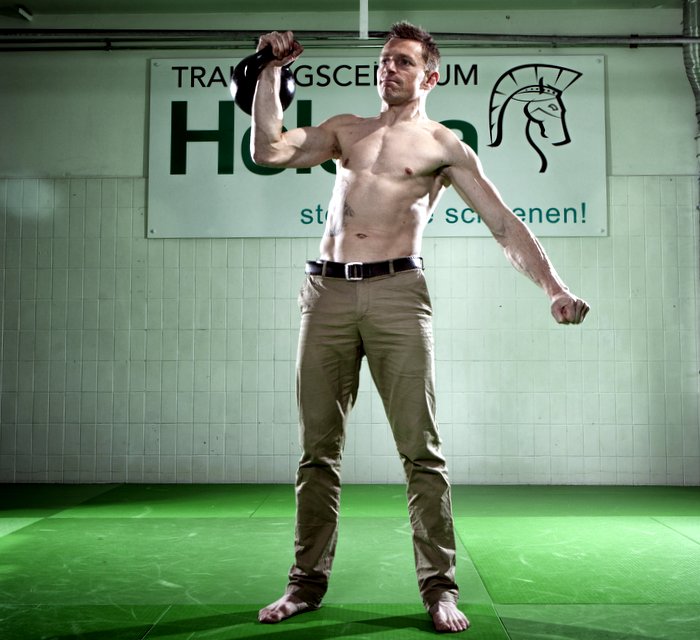
Example Workouts
I’m pretty sure the example workouts below will give you the desired effect. They should help you create a stressed body for your Krav Maga drills, and develop a stronger mind and body that can take a hit. The workouts will also improve your overall fitness.
If you are training alone: Do one arm swing, then the Hardstyle planks followed by precision punching. You can use a heavy bag and mark the different spots you will strike. You can also use a paperclip, string, and a piece of paper. Try to hit the paper fast, without letting the paper touch you back—and without losing your balance.
| A1 | OA swing | HS plank | Precision striking | Sets |
| 10 L/R @32kg | 10 sec | 90 sec | 3-5 sets | |
| A2 | ||||
| Press * | Bottom position Squat, elbows 90* | Precision kicking | Sets | |
| 5-8 @28kg | 20-30 sec @16kg | 90 sec | 3-5 sets | |
| A3 | Sit-up, press up | Press | Getting away from ground-position | Sets |
| 5 L @24kg | 5-8 L @24kg | a.s.a.p. | 3 sets | |
| 5 R @24kg | 5-8 R @24kg | a.s.a.p. | 3 sets |
* Missing in the video below
If you are training with a partner:
| A1 | Farmer walk | Trojan Pose with kettlebell | Choke releases | Sets |
| 50m L/R bottom up @24kg or double @60kg |
16kg, 10- 15 sec. | 90 sec. | 3-5 sets | |
| A2 | OA swings | Push-ups without breathing (10 deep breaths, start after br. out*) |
Hand defenses vs. hand/ leg attacks | Sets |
| 10 L/ 10 R @24kg | 10-20 | 60-90 sec. | 3-5 sets | |
| A3 | TGU | Sprint with kettlebell in front, arms extended at 90* | Ground releases/ fighting on the ground against a standing opponent | Sets |
| 1 L/R @32kg | 12kg | 60-90 sec. | 3 sets |
*This drill takes some practice, but it will teach you how to recover more quickly. You will find that breathing in and holding for the push-ups will be easier.
***
Martijn Bos, Senior RKC Instructor, PCC Instructor is one of the highest ranking Krav Maga instructors in the world, and the first ever EIT (Expert Instructor Team) of the International Krav Maga Federation (IKMF). He owns and operates Trainingscentrum Helena. He can can be contacted through his website: http://www.trainingscentrumhelena.nl
